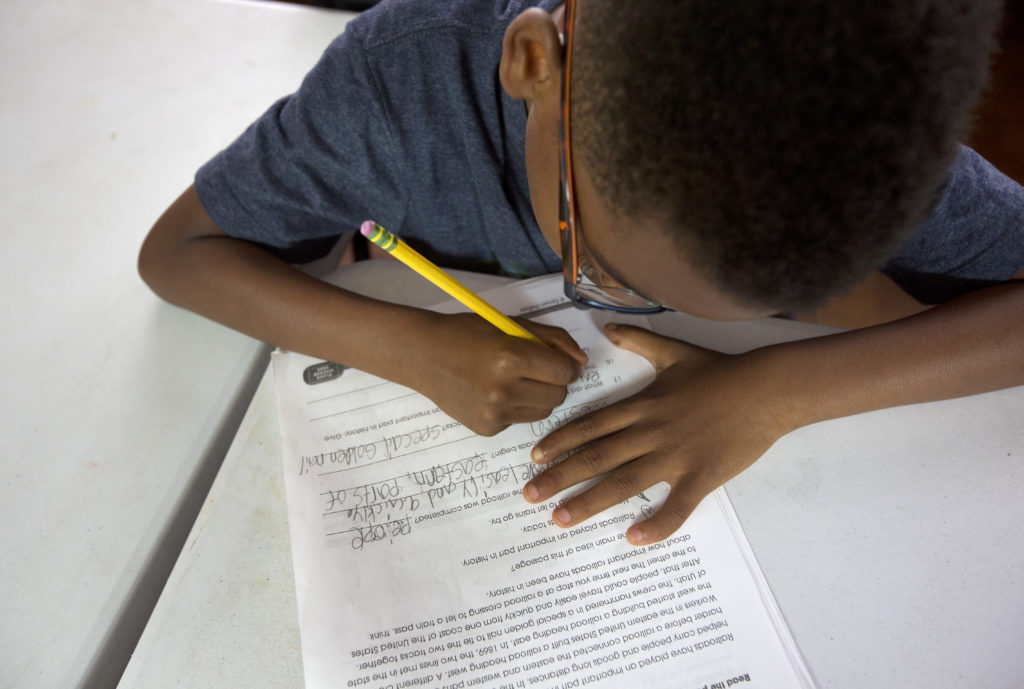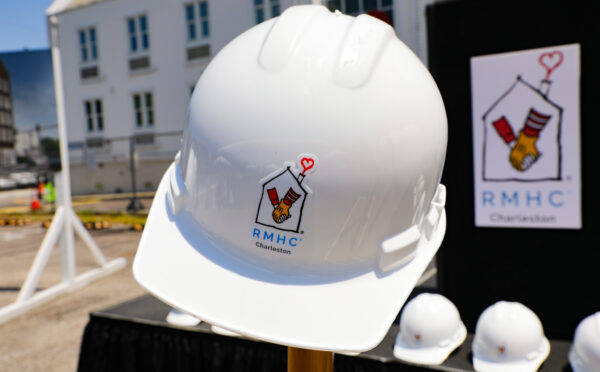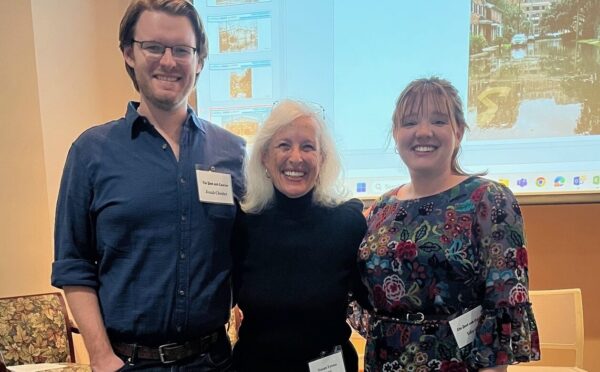
According to our Civic Engagement Agenda findings, more than 40 percent of residents in South Carolina over the age of 25 have a high school diploma or less. This level of education is linked to low earnings and risk of poverty — an overall lower quality of life.
As stated in Coastal Community Foundation’s Policy Agenda, we believe providing high-quality public education to all children will help grow vibrant communities with thriving local economies.
To achieve that goal, the public education system in South Carolina needs to be reformed and improved. With access to high-quality education and opportunities, children will have the ability to change the trajectory of their lives and their families’ lives for generations to come.
One concept we’re strongly supporting to bring immediate solutions to communities that are most in need is the expansion of Public Schools of Innovation in school districts across the state.
On Tuesday, Jan. 12, CCF hosted the third installment of our Philanthropic Engagement Series sponsored by Blackbaud to explore the topic of Public Schools of Innovation in South Carolina. The event, which covered what Schools of Innovation are and, and more importantly, what they are not, featured three local leaders and educators familiar with Schools of Innovation.
WATCH: CCF-led panel discussion on Public Schools of Innovation
CCF President and CEO Darrin Goss and Vice President of Grantmaking & Community Leadership Edie Blakeslee began the session with an overview of the research that underscores the educational disparities in South Carolina, and the work that CCF has done to support education reform in the state. Here, we recap what was covered in the session, as well as insight shared by our three panelists who are involved in these types of schools in South Carolina.
What are Public Schools of Innovation?
Public Schools of Innovation are operated by independent operators in partnership with local school districts. This partnership allows for the operators to have maximum flexibility in how they run the school — from personnel hires and training to tailored curriculum choices to best meet the specific educational and emotional needs of their student bodies. These choices can sometimes mean longer school days or a differently structured school year, to coincide with the typical schedules of students’ households.
Public Schools of Innovation are built for the community, within the community. One example of this is Meeting Street Schools located in North Charleston and Spartanburg. Meeting Street Academy-Spartanburg, which once was private, became a Public School of Innovation in 2013 to serve the children within the immediate surrounding area who demonstrated a need for a more individualized education.
Two members of our featured panel were Kyndran Hilton, principal of Meeting Street Academy-Spartanburg and Nik’Toshi Giles, an early childhood teacher and team lead at Meeting Street Elementary-Burns in North Charleston. Alongside them was Dr. Gerrita Postlewait, Superintendent of Charleston Country School District, who is the Meeting Street Elementary-Burns’ and Meeting Street-Brentwood’s public partner.
Their discussion centered on the policy changes needed to allow for more Schools of Innovation in South Carolina, as well as the positive outcomes each panelist has experienced from working with a School of Innovation.
Discussion
All three panelists firmly believe in the power of Public Schools of Innovation and their ability to make a difference in the educational standards in South Carolina. The neighborhood connection and involvement in Public Schools of Innovation have given school districts, parents, and community members, the unique ability to shape their children’s educational experience. With this, Hilton and Giles have seen immense involvement, especially from the parents.
“We really do encourage our families and our parents to be as involved as possible,” Hilton said. “We not only bring them into the school, but we also go into their neighborhoods just to build those relationships.”
Postlewait, who inherited the partnerships with Meeting Street Elementary-Burns and Meeting Street-Brentwood upon joining Charleston County, said that although the Charleston County School District Board of Trustees maintains the governance of the schools, they benefit greatly from having leeway outside of “normal bureaucratic” regulations, allowing teachers and school administrators to adjust approaches to meet students’ needs as they arise, in context of the community the school serves.
However, Public Schools of Innovation still have guidelines and requirements imposed on them by the district — just as any other public school does, Postlewait said.
One of the main contributing factors to the success of Public Schools of Innovation that was discussed was the standard to which they are held. Postlewait explained that from a governance perspective, there are specific requirements that students of Public Schools of Innovation outperform their counterparts in surrounding public schools — creating rigorous accountability measures.
“Those who are in the community and who are in the school accept the challenge of being much more accountable in exchange for having more operating freedom or more operating latitude,” Postlewait said. “The tradeoff has to be that the benefits for children are discernible and can be publicly displayed consistently.”
She added that’s the key difference from charter schools, which aren’t provided with as much autonomy.
According to the panel, these benefits have worked in favor of students and their families. In terms of absolute achievement, Meeting Street-Brentwood, the longest standing Innovative School in Charleston County, sees a year–and–a–half of academic growth for every year of schooling. This is in comparison to surrounding public schools, who see a year-to-year ratio, and sometimes less.
An added benefit of the Meeting Street Schools partnership structure is that the schools, led by a nonprofit board of directors, often have financial support from donors outside of the community. This funding can be used for a wide variety of activities and student needs. For instance, philanthropic dollars often support a second teacher within every classroom, allowing teachers to give more in-depth attention to individual students. It also allows for students to begin pre-school starting at the age of 3-years old to begin their academic and emotional learning early.
So, in essence, the key to the success of a Public School of Innovation is the agreement between school operators and the public school district to provide operators with autonomy in exchange for demonstrated student success. It’s also key, the panel agreed, that the schools serve the communities they are in, and that the concept of a School of Innovation format is invited in by the school leaders and the surrounding community, ensuring that it’s a truly equitable partnership among all community stakeholders.
Policy changes to support more Public Schools of Innovation
While success of existing Public Schools of Innovation have been proven in South Carolina, state law does not allow for districts to enter into more than one partnership, no matter how large the district is or what the needs are – meaning that Charleston County is capped at their partnership with Meeting Street Schools.
That’s why Coastal Community Foundation has worked over the past year to educate policymakers and stakeholders on the concept of Public Schools of Innovation and how it works. We published a white paper in 2020 to overview a policy model that advances equity in education through the creation of Schools of Innovation.
Bills introduced recently in the South Carolina House of Representatives and Senate would expand Public Schools of Innovation by allowing local school districts to engage with multiple independent operators. Coastal Community Foundation supports the expansion and advocates for additional protections to promote an equitable application of the model in local school districts. We advocate for the inclusion of the following parameters at either the state or local district level:
- The creation of Public Schools of Innovation should prioritize and focus on transforming Comprehensive Support and Improvement schools.
- At least a third of teachers of the existing school should be retained to teach at the Public School of Innovation, with necessary training provided.
- Direct community engagement, feedback, and buy-in on the direction of the School of Innovation before the traditional school is closed.
- The independent operator must be or in the process of forming a nonprofit to ensure that the school is run by a public entity.
If either Bill is passed without these specific measures, Coastal Community Foundation will support efforts to help school districts incorporate them in their local frameworks.


